AI in the Pet Industry
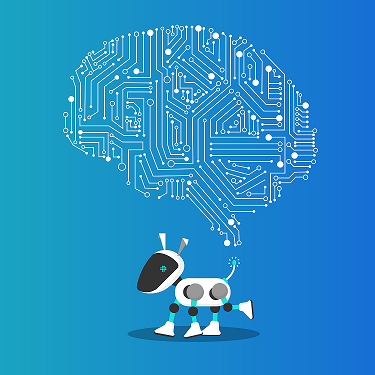
Artificial Intelligence (AI) is the ability of machines to work and act like humans. Popular examples include voice assistants Alexa and Siri, smart thermostat company Nest, and the self-driving capabilities of Tesla.
In this article, we will review companies that currently use AI technology to provide pet products and services and then outline some AI ideas for the pet industry.
Current Use of AI for Pets
First up is Petcube, makers of a popular pet camera. The latest version of the camera contains AI technology that can recognize pets (and humans) and detect whether your dog is barking or your cat is meowing. The camera can then send an alert to your smartphone, so you can then view the live video feed and see what your pet is up to.
This opens up some interesting possibilities. Because the device can also dispense treats and allow for 2-way conversations, we can envision a clever dog learning how to get a treat even when home alone. Our smart pup sits in front of the Petcube and barks, which triggers an alert to its owner at work. Owner then accepts the video call from their dog, tells him he’s a good boy and then pushes a button to deliver a treat.
Petcube also plans to roll out a pet behavior diagnostic feature, that will assist owners in caring for their pet’s health and wellness. Presumably, this means the device will be able to tell if a pet is sick based upon what it views through the camera.
Felik is a laser pointer pet toy that uses AI to play with your dog or cat. The technology uses a camera and algorithms to track and react to a pet’s movements autonomously. Felik does not require human interaction and does not follow a pre-programmed pattern. The software determines the room size, attempts to plot an optimal course for the laser, and then constantly moves around based upon the reaction of your pet. The AI algorithm also prevents the laser from shining directly on your pet or any nearby humans.
Felik allows you to activate the laser and watch all the action from your smart phone.
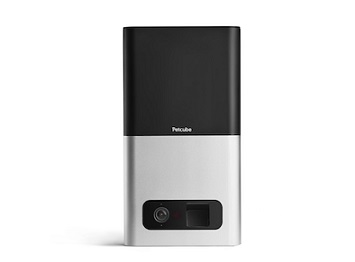 |
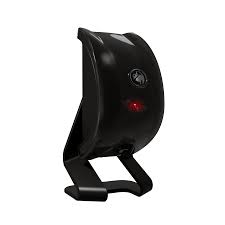 |
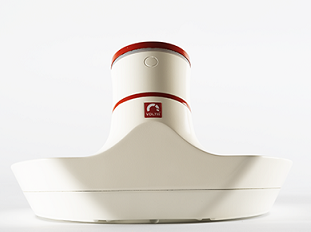 |
| Petcube | Felik | Mookkie |
Mookkie, which bills itself as the AI powered pet bowl, debuted at the CES show in 2019. Mookie uses Volta AI, a visual recognition framework, to make sure a pet’s meal is not consumed by another pet. A camera built in to the food bowl scans the face of an approaching animal and, if a match, opens a flap over the bowl permitting access to the delicious kibble within.
The authentication system is similar to the face-unlock feature on newer smart phones.
Personally, as the pet parent of two golden retrievers and an orange tabby cat, I can see a real value in this product. Because our goldens constantly steal the cat’s food, we have been forced to permanently move the cat’s bowl up onto a table in the living room. I wanted to purchase a Mookkie to see if it would stop our food thieves, but Mookkie will not begin shipping the product until sometime later in 2020.
VARRAM is a fitness robot for pets that uses AI to keep your pet active and health. While still in the development phase, VARRAM bills itself as a “five stimulus artificial intelligence robot.” VARRAM can move itself around a room, with its sensors recognizing walls, furniture and pets. Thus, it will be able to play with your pet without getting stuck under the couch.
The VARRAM was crowdfunded on Kickstarter and began shipping in 2019.
Finally, we have Aibo, the robot dog from Sony. Technically, Aibo is not a pet product as it was not designed for use with dogs or cats. Rather, Aibo is a full on robot, that looks and acts like a dog.
The AI engine in Aibo was designed so that the more you interact with it, through talking and petting, the more the robot recognizes your face and listens to you. Sony claims it intended Aibo to be able to connect with its owners on an emotional level and enrich their lives. A little bit creepy perhaps, but I suppose this could be beneficial for lonely and isolated people.
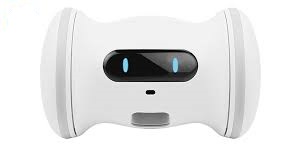 |
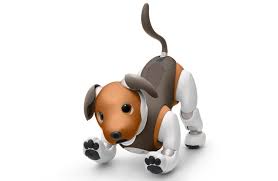 |
| Varram | Aibo |
AI Ideas for the Pet Industry
While the companies above are already using artificial intelligence to solve problems for pet owners, there are many other areas in the pet space where AI can be deployed. Below are some potential AI Use Cases.
Pet Trackers & Pet Cameras
Pet trackers and pet cameras are a goldmine of pet data. These devices monitor virtually all of your pet’s daily activities – movement, eating and drinking behavior, sleep patterns, etc. This vast amount of information opens up many possibilities for machine learning. Quick definition: machine learning is the use of algorithms to parse data, learn from it, and then make a prediction about something in the world.
Imagine a pet camera that observes your dog licking her paw over the course of several days. Using video analytics software that is programmed to be on the lookout for unusual behavior, the camera sends you an alert to check for an injury or a foreign object causing discomfort.
Similarly, a pet tracker detects that your cat has been sleeping several hours more each day than normal. An algorithm in the tracker texts you that something may be amiss with your kitty and that you may want to call your vet.
Pet Telehealth
Veterinary telehealth, the use of technology to deliver vet care, can benefit from the use of chatbots. A chatbot is software that simulates a natural human conversation (either written of spoken). Vet clinics can install chatbots on their websites to act as the first level of interaction with customers. In addition to assisting with communication, advanced bots could answer pet health questions and analyze symptoms.
A pet version of the Ada Health app could be a game changer. Ada is an app that uses AI to help humans manage their health. The app uses a conversational interface to determine symptoms and provide medical information. If needed, the app then offers a remote consultation with a real doctor. A forward looking pet health company could build a similar app for pets.
Dog Walking
Dog walking companies like Rover and Wag could benefit from a natural language processing (NLP) system that delivers a weekly recap to their customers about their pet’s activities. Dog owners could receive a personalized email story detailing the walk routes, duration, encounters with other dogs, and food and potty breaks. NLP allows an algorithm to create these stories at a speed and scale that is not possible for human writers. Yet the emails still appear to be written by a human.
Smart Feeder & Pet Food
A smart feeder could determine when pet food is running low and suggest a reorder, mentioning current coupons or special discounts.
Smart feeders could also monitor a pet’s eating habits and highlight any irregularities. For example, an algorithm would alert a cat owner that Fluffy is drinking less water than normal and perhaps kidney problem should be considered.
| My Dog is a Robot covers the pet technology industry. Keep up with the latest news about products, services and companies in the pet tech space. | Contact Us |



